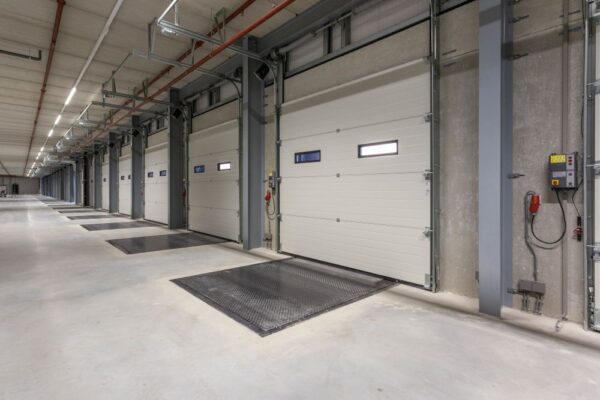The Climate Group, a global non-profit group that advocates a lower-carbon emission world economy, has adopted a worldwide initiative to replace incandescent and fluorescent lighting with LED lighting systems. The Group has calculated that a complete LED rollout, by replacing all existing lighting technology with LED systems will remove 735 million tons of carbon dioxide emissions from the environment, which would reduce overall carbon emissions by 2.3%.
Modern LED lighting systems are more energy-efficient than existing lighting. According to at least one estimate, replacing all existing lighting with LED systems would reduce energy consumption by more than 50%. This reduced energy consumption translates into lower carbon dioxide emissions from coal- and oil-burning power plants that feed electricity into worldwide power grids.
How LED Lights Can Significantly Reduce Global Emissions
Climate change and environmental sustainability have become critical global concerns, necessitating the adoption of energy-efficient technologies across various sectors. LED (Light Emitting Diode) lighting has emerged as a game-changer in the effort to reduce global emissions. By replacing traditional lighting sources with LED lights, substantial energy savings can be achieved, resulting in significant reductions in greenhouse gas emissions. Let’s explore how LED lights contribute to cutting global emissions:
- Energy Efficiency
LED lights are renowned for their exceptional energy efficiency. Compared to traditional incandescent bulbs or even compact fluorescent lamps (CFLs), LEDs convert a significantly higher proportion of electrical energy into light, rather than wasting it as heat. This improved energy efficiency results in a drastic reduction in energy consumption and, consequently, a significant decrease in greenhouse gas emissions associated with electricity generation.
- Reduced Power Consumption
LED lights consume far less power than traditional lighting sources while providing the same or better quality of light. Studies have shown that LED lights can achieve energy savings of up to 80% compared to incandescent bulbs. This reduction in power consumption translates directly into lower carbon dioxide (CO2) emissions, as the majority of global electricity generation still relies on fossil fuels.
- Long Lifespan and Reduced Waste
LED lights have an impressively long lifespan compared to traditional lighting options. While incandescent bulbs may last for only around 1,000 hours, LED lights can last up to 50,000 hours or more. This extended lifespan significantly reduces the frequency of bulb replacements, resulting in less waste generation. Additionally, the manufacturing and disposal processes for LED lights have a lower environmental impact compared to traditional lighting technologies, further contributing to emissions reduction.
- Demand-Side Energy Savings
The widespread adoption of LED lights on a global scale leads to substantial demand-side energy savings. When entire communities, cities, or countries transition to LED lighting, the cumulative reduction in electricity consumption has a significant impact on overall energy demand. This decreased demand for electricity can result in reduced emissions from power plants, particularly those that rely on fossil fuels.
- Potential for Smart Lighting Systems
LED lights can be integrated into smart lighting systems, enabling advanced controls and automation. With features like occupancy sensors, daylight harvesting, and scheduling, smart lighting systems optimize energy usage by adjusting lighting levels based on occupancy and natural light availability. These intelligent systems further enhance energy efficiency, resulting in additional emissions reductions.
- Impact on Global Scale
Given the widespread use of lighting across residential, commercial, and industrial sectors, the potential impact of LED lighting on global emissions is substantial. The International Energy Agency (IEA) estimates that a global transition to LED lighting could result in energy savings equivalent to the annual electricity consumption of more than 800 million households. Such a transition would lead to a significant reduction in carbon emissions, contributing to global efforts to combat climate change.
LED lights offer a practical and effective solution for reducing global emissions. Their superior energy efficiency, long lifespan, reduced power consumption, and compatibility with smart lighting systems position them as a key technology in the quest for sustainability. By embracing LED lighting on a large scale, we can make significant strides in curbing greenhouse gas emissions, mitigating climate change, and creating a more sustainable future. The time to transition to LED lighting is now, as it presents a win-win scenario of energy savings and environmental stewardship.
What Does a Complete LED Rollout Look Like Globally?
A complete LED rollout on a global scale would involve a comprehensive transformation of existing lighting systems across various sectors and regions. While the specifics may vary depending on local factors, the following steps provide an overview of what a complete LED retrofit rollout might entail:
- Assessment and Planning:
The first step is to assess the current lighting infrastructure and energy consumption patterns in different sectors, including residential, commercial, industrial, and public lighting. This involves conducting energy audits, evaluating lighting requirements, and identifying areas with the highest energy-saving potential. Based on the assessment, a detailed retrofit plan is developed, outlining the scope, timeline, and investment required for the project.
- Policy and Regulation:
Governments play a crucial role in driving LED retrofit initiatives. They can establish supportive policies, regulations, and incentives to encourage the adoption of energy-efficient lighting. This may include setting energy efficiency standards, providing financial incentives, and implementing regulations that phase out inefficient lighting technologies. Collaborative efforts between governments, lighting manufacturers, and industry associations are essential to create an enabling environment for a global LED retrofit rollout.
- Education and Awareness:
Raising awareness about the benefits of LED lighting and promoting energy conservation practices is vital for successful adoption. Educational campaigns targeting businesses, households, and the general public can highlight the advantages of LED technology, energy savings, and environmental benefits. Informational resources, workshops, and training programs can be organized to educate consumers, lighting professionals, and policymakers about LED retrofit options and best practices.
- Financial Support and Funding:
To facilitate widespread LED retrofit projects, financial support mechanisms and funding options need to be established. This can involve offering subsidies, grants, or low-interest loans to incentivize the transition to LED lighting. Public-private partnerships can be formed to mobilize investment and secure funding for large-scale retrofit programs. International organizations and development banks can also play a role in providing financial support to countries or regions aiming to implement LED retrofit initiatives.
- Market Transformation and Industry Collaboration:
Collaboration between lighting manufacturers, distributors, contractors, and other stakeholders is crucial for the success of a global LED retrofit rollout. Market transformation efforts involve working with industry partners to ensure an adequate supply of high-quality LED lighting products, competitive pricing, and reliable warranties. Building partnerships with local contractors, electricians, and installers can facilitate the widespread availability and installation of LED retrofit solutions.
- Implementation and Monitoring:
Actual retrofitting involves replacing existing lighting fixtures and bulbs with LED equivalents in a systematic manner. This process can be conducted in phases, starting with high-priority areas such as public spaces, commercial buildings, and large-scale industrial facilities. Ongoing monitoring and evaluation of the retrofit projects are necessary to track energy savings, emission reductions, and the overall success of the initiative. This data can inform future decisions and adjustments to optimize energy efficiency.
- Continuous Improvement and Innovation:
LED technology is constantly evolving, and new innovations continue to enhance its performance and efficiency. To ensure long-term sustainability, continuous improvement and innovation are essential. This involves staying updated with the latest advancements in LED technology, exploring new applications, and incorporating emerging trends such as smart lighting systems, wireless controls, and IoT integration.
A complete LED retrofit rollout on a global scale requires a multi-faceted approach involving collaboration between governments, industry stakeholders, and consumers. It encompasses assessment, planning, policy support, education, financial incentives, industry collaboration, implementation, and ongoing monitoring. By embracing LED retrofit projects globally, we can achieve significant energy savings, reduce greenhouse gas emissions, and create a more sustainable and energy-efficient future.
Roadblocks to Global LED Adoption
Notwithstanding the theoretical positive effects of wide adoption of LED lighting systems, several roadblocks are increasing the difficulty of achieving this goal. Consumers continue to perceive the upfront investment in LED lighting as significantly higher than incandescent or fluorescent technology. This was true for the early generations of LED as the raw materials and components that were used to manufacture those early LED systems were more expensive and the manufacturing processes more involved, leading to higher product prices and Complete LED Rollout. Consumers focused on those prices without considering the offsetting potential reductions in their electrical utility bills. The cost on LED lighting investment has come down significantly in recent years, however.
LED manufacturers and industry groups have used our experiences with the first generations of LED lighting to educate consumers and to focus innovation efforts on the longer-term cost offsets that LED lighting can provide. For example, if every household in the United States substituted one LED light for an existing incandescent light bulb, the aggregate annual household energy cost savings would exceed $700 million. Moreover, as manufacturers have improved their manufacturing techniques and raw materials are becoming more available, the prices of LED lighting products are coming down.
Consumers also voiced concerns over the quality of light that early LED systems provided. White LED lights are perceived to be harsh and not as warm as incandescent lights. Again, LED technology is improving and expanding to give consumers more color options and lighting systems that are more inviting and color-controlled. Manufacturers are also improving control systems that allow for better dimming of LED lighting and better spot control over individual lighting fixtures.
The Climate Group and organizations that have similar goals are generally realistic about the roadblocks and challenges that their initiatives will face. We’re optimistic that the value promise of specification grade commercial LED lighting will continue to inspire the widespread adoption of high quality LED lighting in industries and applications around the globe.








